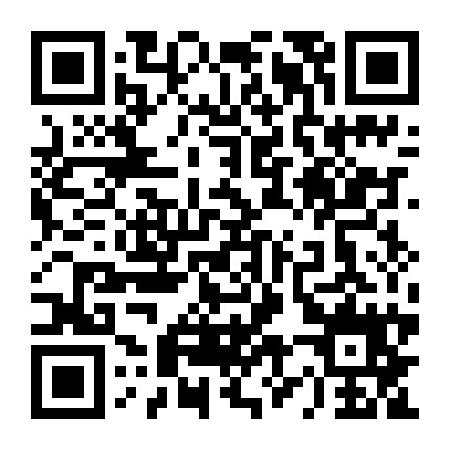医学博士英语统一考试之后,即将迎来各院校的考博英语初试,英语考试的备考,参考历年真题是一个很重要的备考过程,今天新东方在线小编给大家整理了云南大学2013年考博英语真题,帮助大家更好的备考,考博英语考试,一起来看看吧!
Behavior is one of two general responses available to endothermic (warm-blooded) species for the regulation of body temperature, the other being innate (reflexive) mechanisms of heat production and heat loss. Human beings rely primarily on the first to provide a hospitable thermal microclimate for themselves, in which the transfer of heat between the body and the environment is accomplished with minimal involvement of innate mechanisms of heat production and loss. Thermoregulatory behavior anticipates hyperthermia, and the organism adjusts its behavior to avoid becoming hyperthermic: it removes layers of clothing, it goes for a cool swim, etc. The organism can also respond to changes in the temperature of the body core, as is the case during exercise; but such responses result from the direct stimulation of thermoreceptors distributed widely within the central nervous system, and the ability of these mechanisms to help the organism adjust to gross changes in its environment is limited.
Until recently it was assumed that organisms respond to microwave radiation in the same way that they respond to temperature changes caused by other forms of radiation. After all, the argument runs, microwaves are radiation and heat body tissues. This theory ignores the fact that the stimulus to a behavioral response is normally a temperature change that occurs at the surface of the organism. The thermoreceptors that prompt behavioral changes are located within the first millimeter of the skin’s surface, but the energy of a microwave field may be selectively deposited in deep tissues, effectively bypassing these thermoreceptors, particularly if the field is at near-resonant frequencies. The resulting temperature profile may well be a kind of reverse thermal gradient in which the deep tissues are warmed more than those of the surface. Since the heat is not conducted outward to the surface to stimulate the appropriate receptors, the organism does not “appreciate” this stimulation in the same way that it “appreciates” heating and cooling of the skin. In theory, the internal organs of a human being or an animal could be quite literally cooked well-done before the animal even realizes that the balance of its thermomicroclimate has been disturbed.
Until a few years ago, microwave irradiations at equivalent plane-wave power densities of about 100 mW/cm2 were considered unequivocally to produce “thermal” effects; irradiations within the range of 10 to 100 mW/cm2 might or might not produce “thermal” effects; while effects observed at power densities below 10 mW/cm2 were assumed to be “nonthermal” in nature. Experiments have shown this to be an oversimplification, and a recent report suggests that fields as weak as 1 mW/cm2 can be thermogenic. When the heat generated in the tissues by an imposed radio frequency (plus the heat generated by metabolism) exceeds the heat-loss capabilities of the organism, the thermoregulatory system has been compromised. Yet surprisingly, not long ago, an increase in the internal body temperature was regarded merely as “evidence” of a thermal effect.
1. The author is primarily concerned with
(A) showing that behavior is a more effective way of controlling bodily temperature than innate mechanisms
(B) criticizing researchers who will not discard their theories about the effects of microwave radiation on organisms
(C) demonstrating that effects of microwave radiation are different from those of other forms of radiation
(D) analyzing the mechanism by which an organism maintains its bodily temperature in a changing thermal environment
(E) discussing the importance of thermoreceptors in the control of the internal temperature of an organism
2. The author makes which of the following points about innate mechanisms for heat production?
I. They are governed by thermoreceptors inside the body of the organism rather than at the surface.
II. They are a less effective means of compensating for gross changes in temperature than behavioral strategies.
III. They are not affected by microwave radiation.
(A) I only
(B) I and II only
(C) I and III only
(D) II and III only
(E) I, II, and III
3. Which of the following would be the most logical topic for the author to take up in the paragraph following the final paragraph of the selection?
(A) A suggestion for new research to be done on the effects of microwaves on animals and human beings
(B) An analysis of the differences between microwave radiation
(C) A proposal that the use of microwave radiation be prohibited because it is dangerous
(D) A survey of the literature on the effects of microwave radiation on human beings
(E) A discussion of the strategies used by various species to control hyperthermia
4. The author’s strategy in lines 39-42 is to
(A) introduce a hypothetical example to dramatize a point
(B) propose an experiment to test a scientific hypothesis
(C) cite a case study to illustrate a general contention
(D) produce a counterexample to disprove an opponent’s theory
(E) speculate about the probable consequences of a scientific phenomenon
5. The author implies that the proponents of the theory that microwave radiation acts on organisms in the same way as other forms of radiation based their conclusions primarily on
(A) laboratory research
(B) unfounded assumption
(C) control group surveys
(D) deductive reasoning
(E) causal investigation
6. The tone of the passage can best be described as
(A) genial and conversational
(B) alarmed and disparaging
(C) facetious and cynical
(D) scholarly and noncommittal
(E) scholarly and concerned
7. The author is primarily concerned with
(A) pointing out weaknesses in a popular scientific theory
(B) developing a hypothesis to explain a scientific phenomenon
(C) reporting on new research on the effects of microwave radiation
(D) criticizing the research methods of earlier investigators
(E) clarifying ambiguities in the terminology used to describe a phenomenon
考博必备!历年真题及答案
考博精品好课,就选新东方!

 资料下载
资料下载
【必看】考博英语词汇10000例精解
发布时间:2020-09-02关注新东方在线服务号
回复【10000】免费获取
医学考博英语作文核心基础词汇整理
发布时间:2020-04-15关注新东方在线服务号
回复【医学考博】获取
医学考博英语阅读理解练习资料
发布时间:2020-04-15关注新东方在线服务号
回复【医学考博】获取
法学考博英语高频词汇word版
发布时间:2020-04-15关注新东方在线服务号
回复【医学考博】获取
医学博士英语统考真题及解析
发布时间:2019-12-26关注新东方在线服务号
回复【考博真题】获取
全国医学博士外语统一考试真题
发布时间:2019-12-26关注新东方在线服务号
回复【考博真题】获取
中科院考博英语复习备考实战经验分享
发布时间:2019-12-26关注新东方在线服务号
回复【考博经验】获取
中科院考博英语真题练习资料
发布时间:2019-12-26关注新东方在线服务号
回复【考博真题】获取

关注新东方在线服务号
关注新东方在线服务号,
免费获取考博必看干货资料

 推荐阅读
推荐阅读
沈阳工业大学2022年博士研究生招生考试英语真题B卷
来源 : 沈阳工业大学 2022-12-26 16:19:18 关键字 : 沈阳工业大学2022博士英语真题
沈阳工业大学2022年博士研究生招生考试英语真题A卷
来源 : 沈阳工业大学 2022-12-26 16:18:19 关键字 : 沈阳工业大学2022博士英语真题
沈阳工业大学2021年博士研究生招生考试英语真题B卷
来源 : 沈阳工业大学 2022-12-26 16:09:06 关键字 : 沈阳工业大学2021博士英语真题
沈阳工业大学2021年博士研究生招生考试英语真题试卷A卷
来源 : 沈阳工业大学 2022-12-26 16:07:31 关键字 : 沈阳工业大学2021博士英语真题
沈阳工业大学2020年博士研究生招生考试英语真题试卷
来源 : 沈阳工业大学 2022-12-26 16:04:42 关键字 : 沈阳工业大学2020年博士英语真题


 考博好课推荐
考博好课推荐
基础薄弱,备考迷茫,送纸质资料
价格 : ¥2280元
资深教师,教学简明,直接有效!
价格 : 0元
 资料下载
资料下载
关注新东方在线服务号
回复【10000】免费获取
关注新东方在线服务号
回复【医学考博】获取
关注新东方在线服务号
回复【医学考博】获取
关注新东方在线服务号
回复【医学考博】获取
关注新东方在线服务号
回复【考博真题】获取
关注新东方在线服务号
回复【考博真题】获取
关注新东方在线服务号
回复【考博经验】获取
关注新东方在线服务号
回复【考博真题】获取

 阅读排行榜
阅读排行榜
 相关内容
相关内容